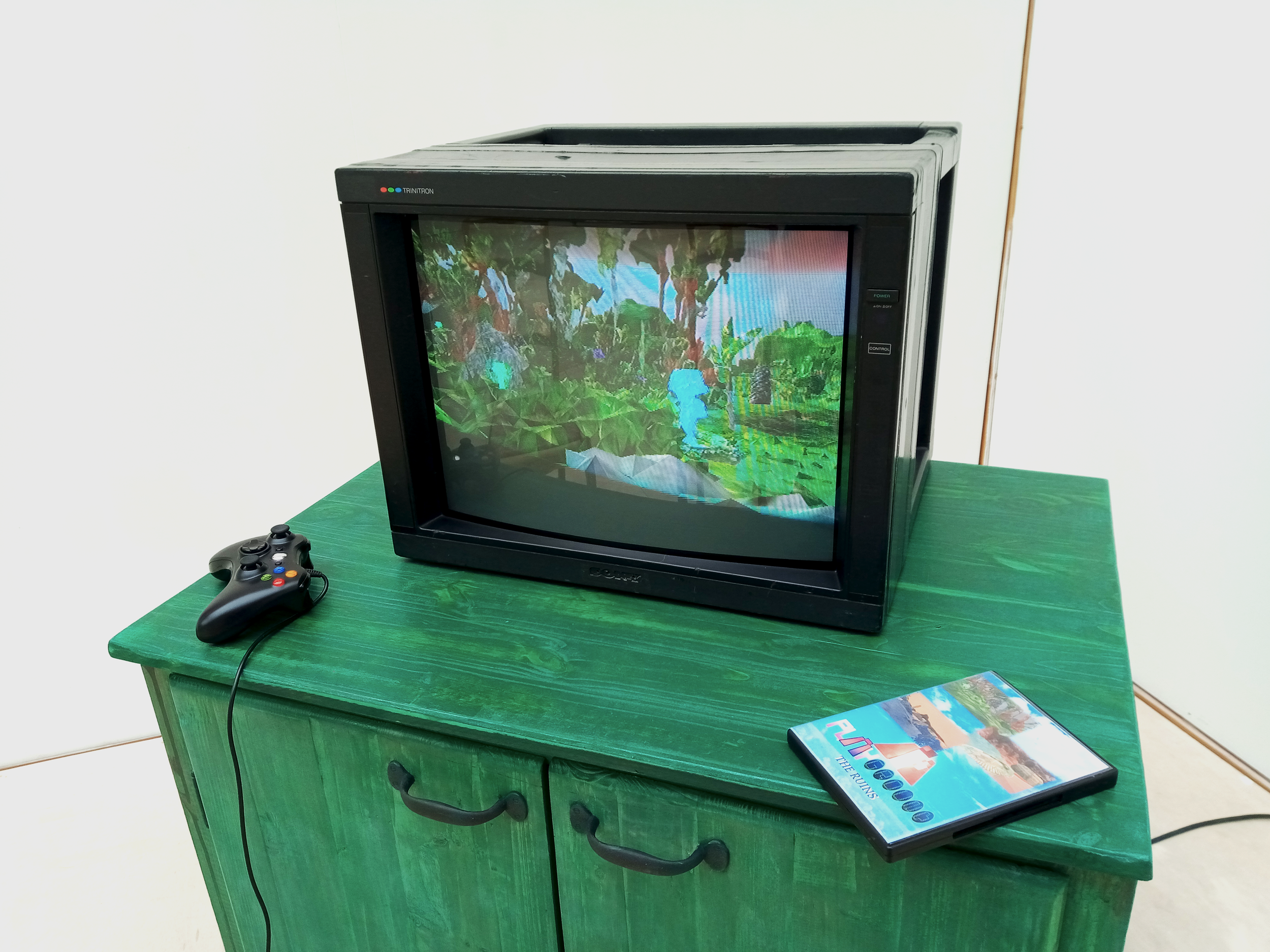

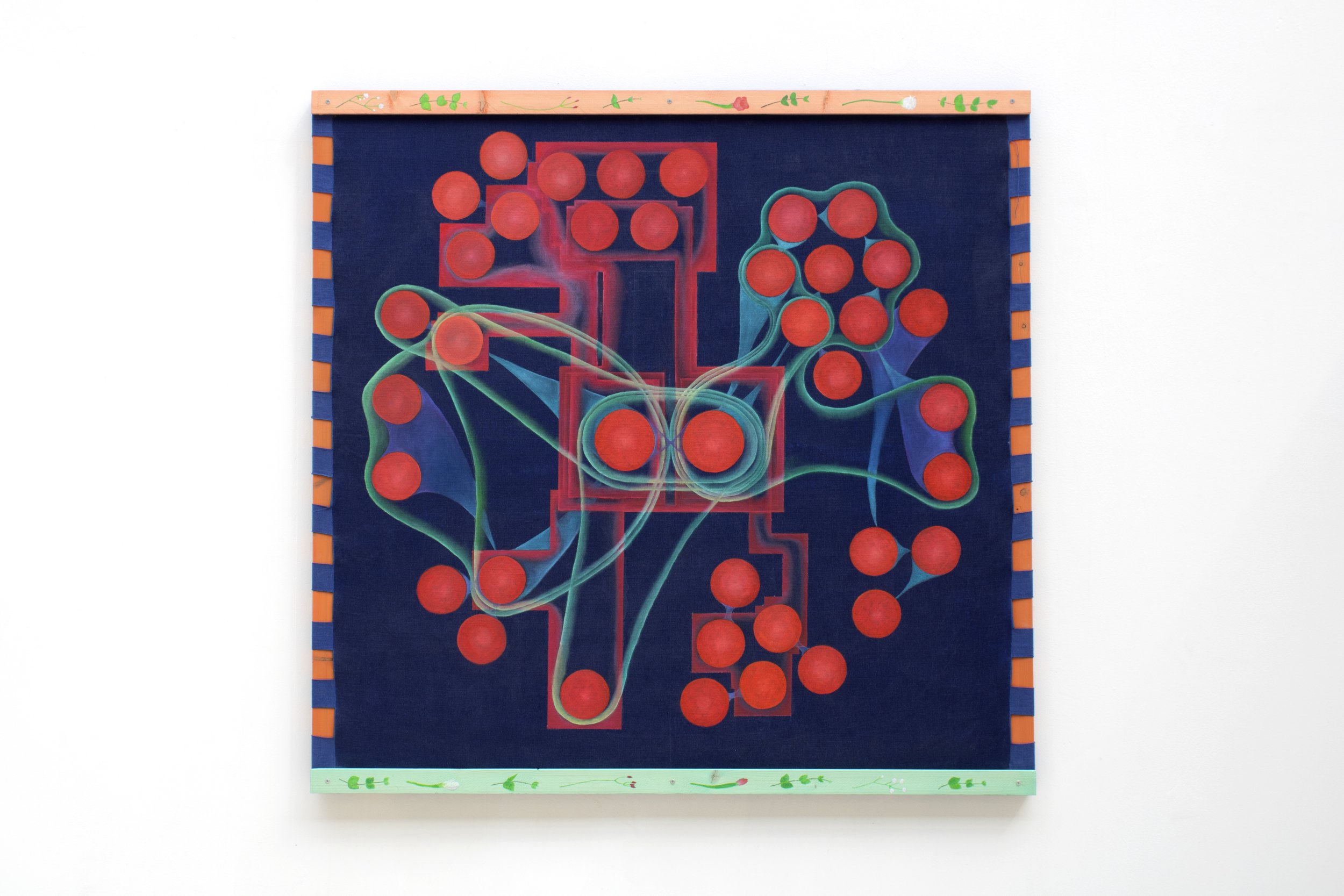

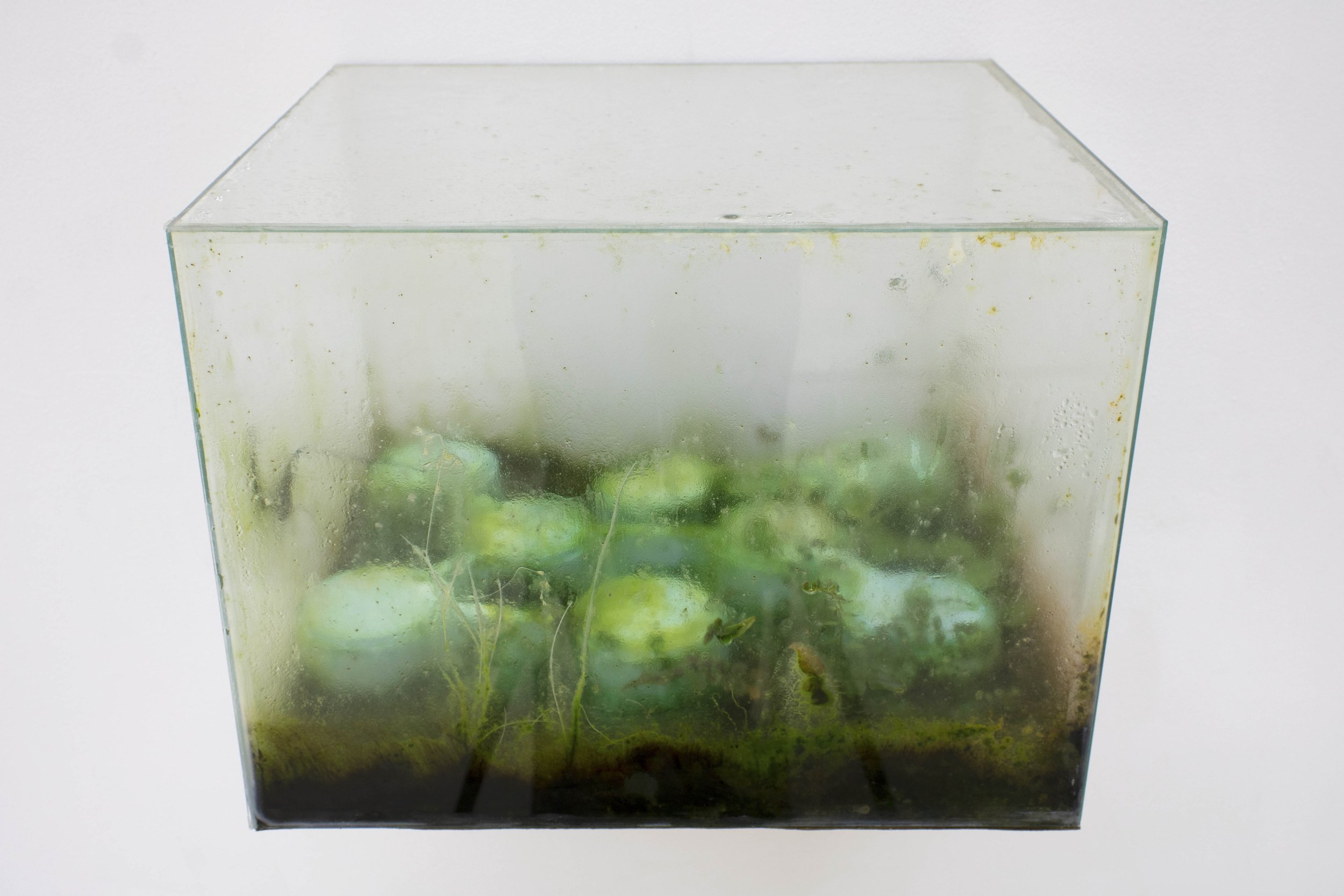
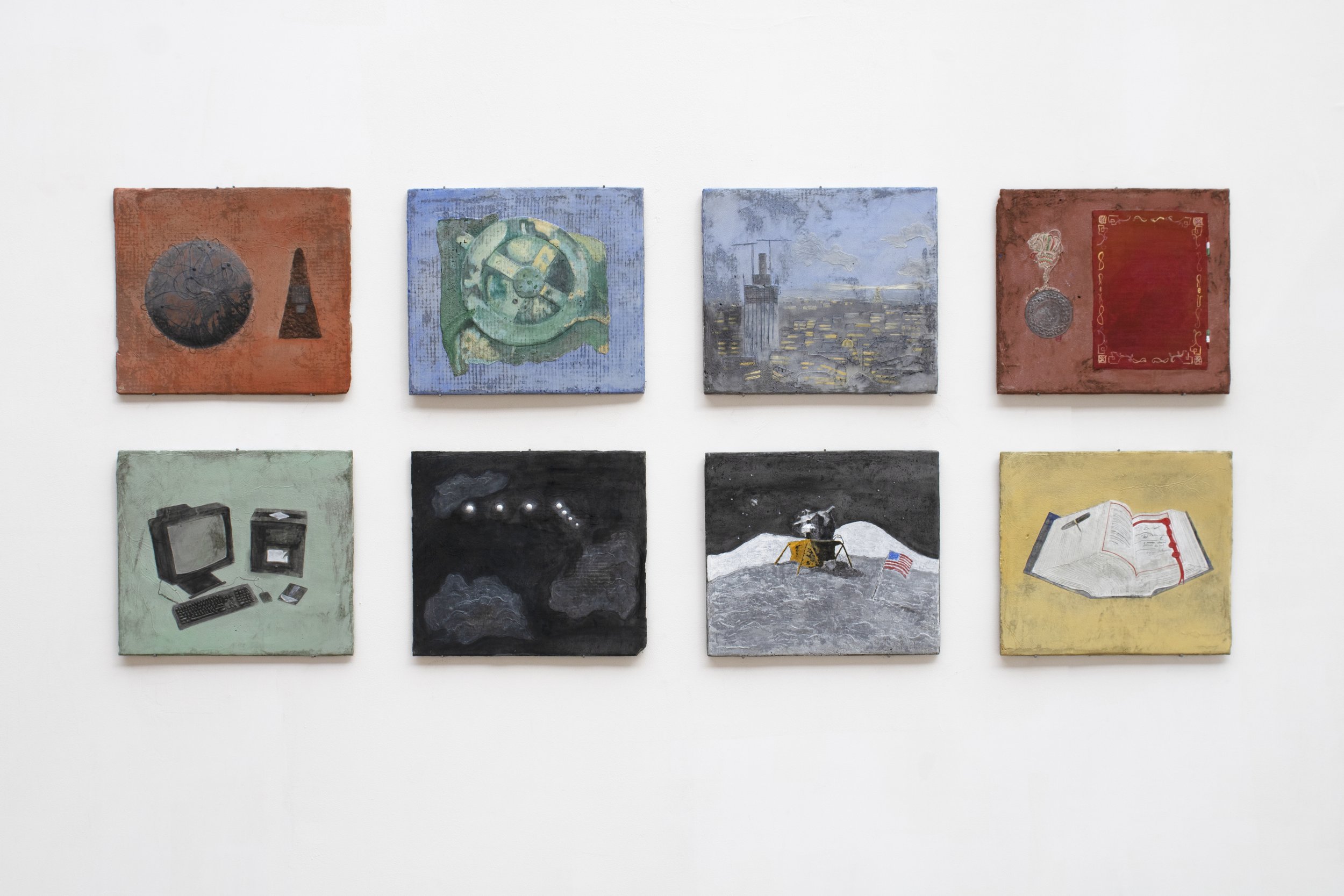

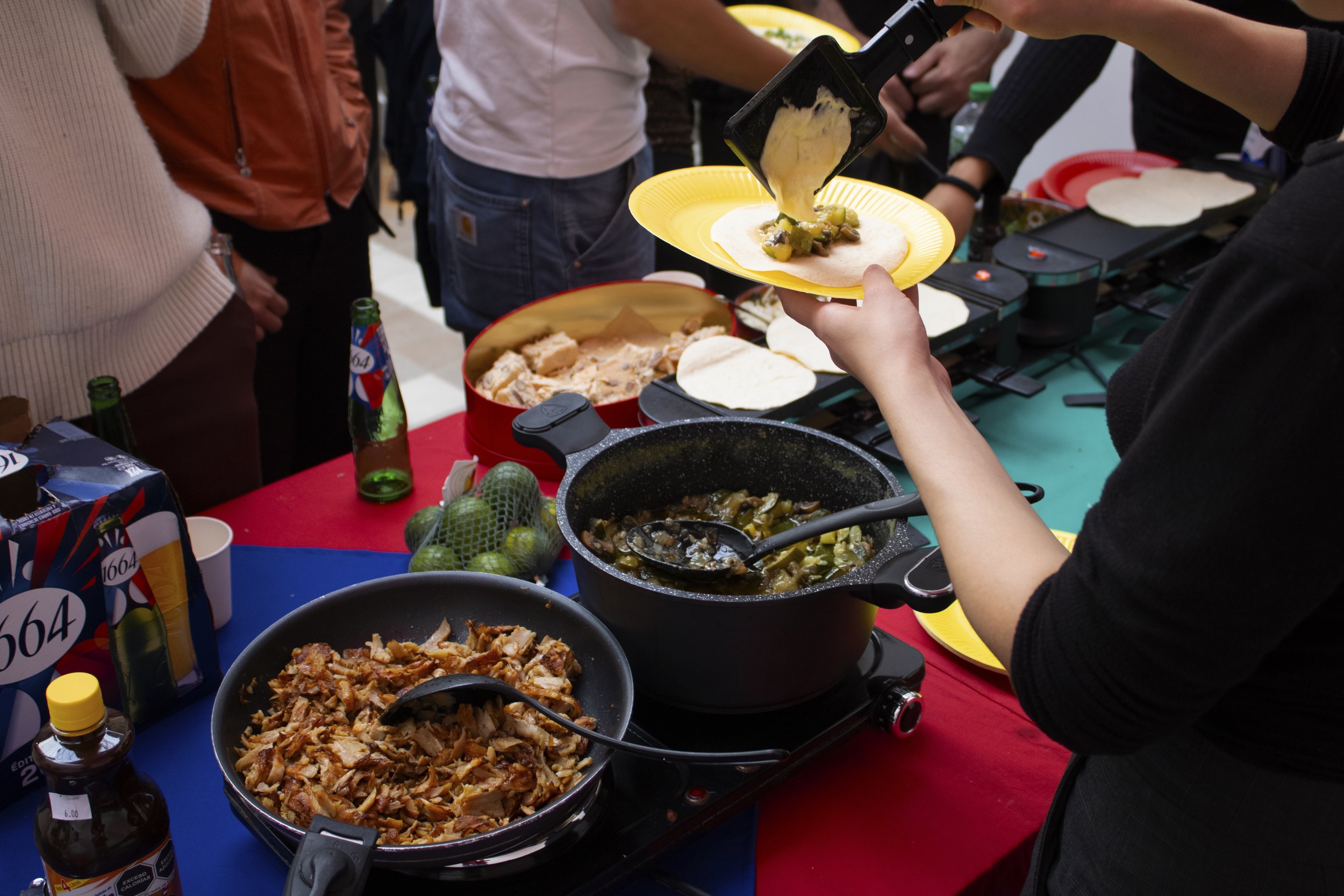
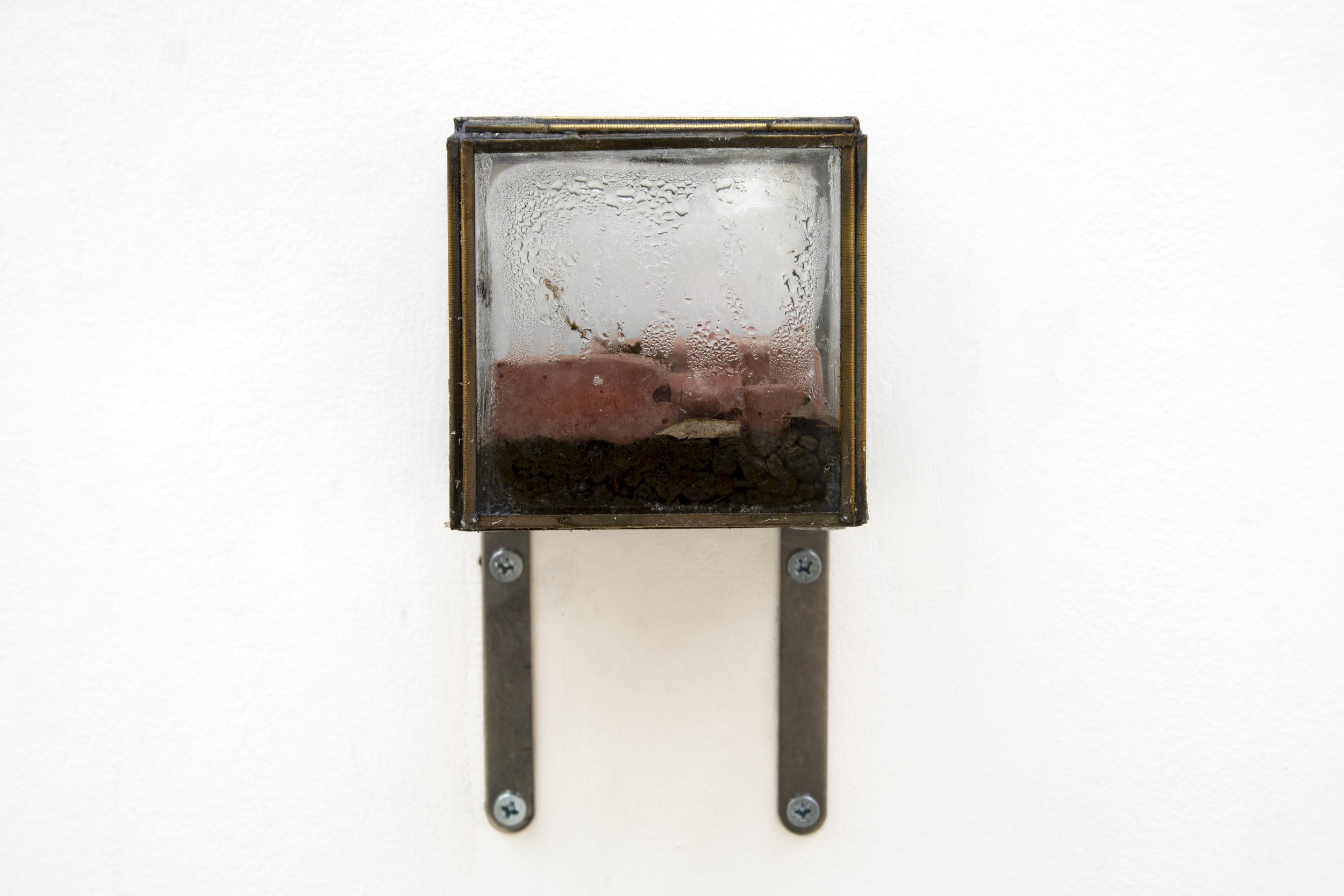
THE INTERVIEW
Manuel Aparicio Ugalde
1. Could you share a bit about your background and what led you to start your art practice?
I grew up in Mexico City. I went to a French school, so I was always in contact with French culture, and the school kind of educates you in a way so that your path is to go to France.
When I finished high school, I helped my parents move out of the city because they didn’t want to live there anymore. During that year, it was a lot of traveling and stuff, and it was a year of a lot of self-introspection.
I always knew I wanted to do something related to art, but during that year, I realized that I wanted to pursue this and study art. After that year, I applied to—not the Beaux-Arts school, but the École Préparatoire Via Ferrata. It's like a preparatory year for entering school, and I got accepted. So that's when I decided—it was coming to Paris and visiting the city, visiting my brother and sister, who were also here for more than two years—I realized I really wanted to do this, and that's what put me on this path.
Just last year, I finished my master's diploma at the Beaux-Arts of Paris school.
2. What themes does your work explore?
I would say my work explores themes like the inner self—that and our place in the universe.
That can be in a very personal way, like, for example, with my own struggles, my own history—or it can be in a broader way, exploring Earth's past and humanity's history with nature, where are we going as a species, and its relationship to itself also, because it's a very conflicting species.
3. How has your work evolved over the years, and what has influenced these changes?
When I first got to France, I was like in this culture shock, so the first thing I started doing was trying to understand this new place. I started noting similarities and differences between French and Mexican culture, and that led me on a path to find some sort of actual code that helped me explain, at least in my head, the hardest things—concepts like home, the place of work, what it is to travel and immigrate, for example.
This kind of put me on this path of doing sort of abstract figures. It's sort of like ideograms and language. Then, over the years, it has evolved, and it has amplified to other mediums. When I started, I was only doing painting, and now I kinda do everything, like sculpture—for my diploma there was a video game, I did a culinary performance, I write sometimes. It varies a lot.
I will say the different changes that have happened through my artworks is because of the artists I have known across time, the people I know, like my family, like my wife, for example, my friends. Also, because I spend a lot of time going to museums and galleries—so I would say that's what has influenced me the most.
4. Where do you find inspiration for your work?
Well, in the same vein as the last question, I would say in the people I know, the situations I find myself in, or with different feelings I have. I guess that's what gets me going to begin with, or when I come across something I can't really explain or understand.
I think that's what really inspires me sometimes—wanting to understand. It's what makes me want to repeat it and analyze it. And my work can be very, very analytic sometimes. For example, if I come across an idea or an image, I write about it or I draw it and until it becomes clear in my mind, and then I start working on how to materialize it.
5. Can you walk us through your creative process and how you bring an idea to life?
It is a very thoughtful process. Sometimes I prefer to do it like more gesturic and then explain after, but I always find myself kind of analyzing everything. When I do a painting, everything has a meaning, and I really want everything to make sense to myself or to anyone who comes across it.
6. What is the project you’re most proud of to date?
I would say my master's diploma exhibition. I don't know if it counts because, for me, it was like some sort of curatorial project, but also my artistic practice, because it presented all these practices I had been working on for like five years.
For me, it represents a lot of what composes me as a person because I feel like when I present work and there’s only one medium, people just see a glimpse of who I am or what my work is, rather than the whole experience. That was kind of my diploma. I mean, the title of my diploma was Between Two Worlds or More, because it talks about these different situations I have found myself in. For example, Mexican culture, French culture, religion, atheism, socioeconomic categories, ethnic origins, etc.—so that’s what I wanted to represent. One of the ways that I managed to represent this during the exhibition was through different mediums, because not everything can be explained by a painting or by a sculpture. So, some things I had to do, for example, with the culinary performance, where I served a mix, a culinary mix—between Mexican and French recipes. They were like tacos with French raclette, everyone loved it, and it was a great event.
So, I'm very proud of that. It was with this exhibition that most people got to really understand what my work’s about and who I am.
Q: With your work, do you think you like to create more of an environment that’s a cohesive experience?
Yeah, I like to, but it depends also on the project, I guess, because for example, for painting, I don't feel it's as necessary as when I do a very big installation. For example, the video game I presented, I could have just put a projector with a controller, but I wanted people to experience this feeling I had growing up with video games, so I brought this installation with a wooden table, like a TV table, and other furniture, like with painted chairs and everything. I wanted to build the same setup I had when I was a kid growing up, you know, with an old TV and everything. So, in that sense, I wanted to build its environment because it was the best way to understand the work, but it really varies from work to work.
Q: I mentioned to you that the theme of the collection was sustainability and how artists in Paris are talking about it—how do you think it relates to your practice and informs your work?
I tend to work with, for example, some of the work I presented in my diploma, I mean, the series is called Ciudad-Bioma, which means biome slash city, and they were these terrariums I built in which I put a cement cast with plastic consumption objects, like the single use ones that are very polluting and end up in the ocean.
That perturbs me, you know? So I wanted to give them another life and think about them as an object also because they have very intriguing shapes. Like, once they’re empty of their contents, it becomes a very special shape.
I use those as casts for the cement, and then they begin to give these shapes that often remind me of architecture. For my project, I started putting them in this enclosed environment where they were like these fully artificial objects, but the fact that it's just cement reminds us that today we are building these huge cities in cement, and there's no space for nature.
So, putting it in this environment with—I literally just put dirt and water—then I closed it forever, and plants started growing because of the water and they just kept growing around this structure. It's great, this confrontation between the two, artificial and natural, and I find it most interesting because it is a confrontation, but also a collaboration. This creates a sort of friendship because they will go on like that forever, and it's something I want to keep working with in the future.
It's interesting to think about how, when I use cement in my works, it is a permanent object, but it’s also very fragile. I did this for my diploma also, and I wanted to talk about different moments in history for humanity that were for me, like— like written on rock..I don't know.. like they're so important that they're permanent. So, that's why I made them in this very durable material, but I also made them very thin because I believe the weight of history is very heavy, but I think we can repeat a lot of mistakes, and current events can mirror past events very easily.
So, I believe that even if it's a very durable and solid material, it is also very fragile, and we can forget about it.
I guess it relates to nature and to our presence on the planet. It kind of relates to the balance of all things and human intervention in the natural world.
Q: Do you work with cement a lot?
I have some planned projects with it, but it's a recent medium. I'm always exploring and trying different things, and I started working with it. I mean, I started with plaster, but I feel plaster is like this noble material that's very fragile and very white. But what inspired me to work with cement was going in the city, you know? It was the thing I saw the most, and I was like, ‘Oh, wait, what if I work with that?’
Q: Do you think you had the same tendencies when you were in Mexico City to work with these urban and industrial materials?
I was definitely, definitely inspired by them, but I didn't know at the time what to do with them. I remember I used to do a lot of watercolors and drawing, but even if I was inspired by these other materials, I didn't really know how to work them, so I had to wait until I went to art school to start really exploring everything.
7. Do you see yourself staying in Paris long-term, or are there other cities that inspire you to work there?
I see myself staying in Paris for a long time. Maybe forever, because it's a city where I have grown up as an adult, and I think I still have a lot of experiences to live here, a lot to discover. But, at one point, I would like to return and to live in Mexico City because that's where I grew up as a kid, and I remember a very beautiful city.
If I could, I would like to live between Mexico City and Paris, but I think we're still far from that.
8. What would you like to accomplish in the next few years?
Well, I would like to grow as an artist.
Mostly my practice, to develop new techniques and be sure of what I like, but also maybe in the social aspect of it too. Mostly, I would like to inspire the people around me and, hopefully, anyone who comes across my work.
9. If there’s one thing you hope people take away from your work, what would it be?
I will say that, through empathy, I would like them to think about themselves, about other people's lives, and the path of humanity that we are constructing and we are all taking part in.

